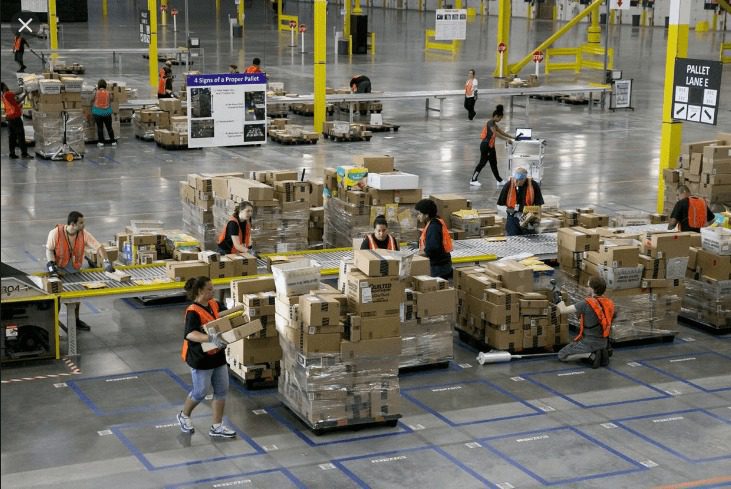Mass store closures across “non-essential” retailers in the wake of the coronavirus (COVID-19) pandemic made it obvious that shoppers secluded in their homes would spend more time shopping online, but key questions remain: “How much will they be buying?,” and “How does this affect e-Commerce now and in the long term?”
While it was easy to predict an e-Commerce sales spike, reports about the scale of the increase have varied. For example, from March 17-23, e-Commerce sales increased by 14.4% when compared to the same week last year, according to Qubit. Listrak reported a much larger jump for e-Commerce sales (40%) since the Trump administration declared a national state of emergency on March 13.
E-Commerce sites have responded in kind by doubling ad spend in less than a month, from $4.8 million for the week of Feb. 17 to $9.6 million for the week of March 9, according to MediaRadar.
The e-Commerce uptick appears to have started in February, with online orders surging by 108% year-over-year, according to Quantum Metric. But while the order volume has increased significantly, average order value (AOV) decreased 31%, suggesting that shoppers are buying on impulse and/or filling in on a few items, even as they deal with anxiety that individual items will sell out.
“Quick turnaround shopping happens when you think something its going to go out of stock, like on Black Friday,” said Tamara Gaffney, VP of Decision Strategy at Quantum Metric in an interview with Retail TouchPoints. “‘I don’t want to miss my chance to get this.’ I think that will imply that a lot more packages are coming through the shippers right now. There are smaller packages that are ordered more frequently. What’s interesting about all online is that every category I’ve looked at, regardless of if you think that matters right now, is seeing online growth. I would characterize that growth at levels that we typically see in November during the holiday season.”
Gaffney noted that the urgent buying habits online differ from most in-store experiences, because brick-and-mortar retailers have had decades of history in understanding merchandise placement that hasn’t yet translated to their e-Commerce sites. Throughout the COVID-19 crisis, retailers must primarily focus on ways to improve that product visibility, especially as more orders flow in.
“Knowing when they’re out of stock is not something that everyone is good at in online retail,” Gaffney said. “They may not have all of their systems hooked up to all of their inventory across their store locations to know where their inventory is, how they’re going to get it, and when they’re out. It’s really frustrating for customers when they try and order something only to find out they can’t have it for a while, and that wasn’t known to them when they placed the order. Those are going to become focus areas for retailers in this undetermined amount of time.”
E-Commerce Demands Pressure Supply Chains, But Lead The Way For Automation, Communication
While the surge in e-Commerce ordering drives more immediate revenue for retailers, it puts added pressure on the supply chain. Amazon has already had to ban receipt of non-essential items from marketplace sellers at its U.S. and UK fulfillment centers to prioritize space for high-demand products and medical supplies, and there have been reports that some Amazon Prime deliveries have been delayed by up to a month. Given that most other retailers don’t have the robust supply chain and fulfillment networks that Amazon does, it’s likely that many are feeling stretched thin with delays of their own.
In fact, in early March, 20% of shoppers already had had an e-Commerce delivery delayed or canceled due to coronavirus, according to ShipStation.
The demand spike already has forced sellers and logistics providers to adapt, with Amazon and Walmart both hiring hundreds of thousands of fulfillment-related employees. As the supply chain has tightened over the past few months, retailers are revisiting their strategies for order fulfillment and delivery, including potentially slowing down fast-shipping strategies in order to keep up with the surge and keep workers safe. If product shipment is slow, then retailers and suppliers must at the very least keep communication open and transparent with both each other and customers.
“At eTail West, the CIO of Williams-Sonoma said that they really invested a lot in making sure you could see where a shipment was along the way,” Gaffney said. “They measured that people checked their shipping information a minimum of four times. The visibility of where orders are in the shipment process needs to be updated and built upon.”
In the long term, retailers may actually benefit once overall demand levels out, because many retailer-supplier relationships still rely on manual processes, rather than automation with data exchanged electronically.
“I think there’s going to be a push to eliminate anything that was historically paper and virtualize those processes,” said John Eagles, Managing Partner at Retail Consulting Partners in an interview with Retail TouchPoints. “You can’t virtualize a warehouse worker but you can virtualize the communication and the process between supplier and retailer. Many of these processes are still manual or have paper-based components to them. I can see retailers changing requirements around how they communicate with their suppliers. There’s always been a guideline, but I think that guideline will be more dramatically enforced.”
It’s Now Or Never: Off-Price, Discounters And Mom-And-Pops Will Have To Take E-Commerce Seriously
The e-Commerce shakeout also may force businesses that otherwise paid scant attention to online sales, namely off-price and discount retailers, to reconsider the option in depth. While a few discount retailers fall under the “essential” retail category, particularly major dollar stores such as Dollar General and Dollar Tree, enabling them to keep their stores open and attract hordes of shoppers buying groceries, they still have never built out a full e-Commerce presence.
“There will be a new emphasis and priority on e-Commerce for those that don’t have it,” said Eagles. “Their models may not allow for full 100% support of their product line, but they can carve out categories or subcategories where they can go online. I think that will be a big area of opportunity for some of those larger discount stores or stores that haven’t traditionally made e-Commerce a priority.”
Eagles predicted that smaller Tier 2 and 3 retailers, which may have looked at online as an afterthought because they only operate a regional or local business or assume that its consumer base largely pays cash, are going to have to pivot to e-Commerce — largely because they have no choice but to invest in those platforms. This also could lead to an emergence of more e-Commerce providers since there will be increased demand for their technology.
“I think those retailers will rethink the old paradigms of, ‘People don’t pay cash in our business,’ or ‘People don’t have access to buy the products online,’” Eagles said. “You’ll see a big boom in some of the smaller technology companies that can deliver e-Commerce to some of the smaller players. The large retailers will still work with the bigger tech companies, but mom-and-pops and retail chains with 10, 20 or 30 stores will find themselves working with more of the smaller e-Commerce engines. When there’s no money coming in, people get creative pretty quickly. Spinning up an e-Commerce site doesn’t need to be a multi-year initiative. You can do it in days or weeks as long as you are willing to start small, build on it and not expect it to be perfect.”













